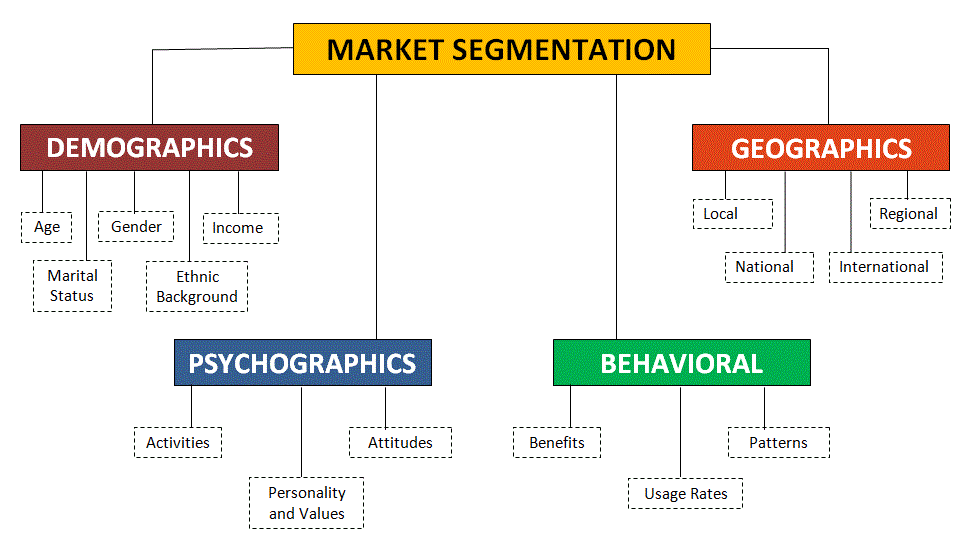Understanding Segmentation: It’s All About How You Slice It
Big Data is the hottest topic today, especially in marketing. But, what is it and how do you use it? The answer is data-driven marketing. Data-driven marketing provides companies with a strategy and roadmap to start building a view on every unique “segment” or customer group. This view is used to improve the customer experience.
Where should you start with segmentation? Segmentation is the process of dividing a large group of people with similar characteristics into "segments." Segments are usually created by using different types of primary characteristics such as: demographic, geographic, psychographic and behavioral. There are also many secondary characteristics that can help you develop micro-segments, which I'll discuss in our follow-up on micro-segmentation and analyzing behavioral data.

Segmentation reveals subscriber intelligence or insights that could otherwise be lost in the volume of vast network intelligence. These insights inform messaging strategies for marketing and customer service to help build an excellent subscriber experience. Segmentation can also help marketers better understand the customer lifecycle and predict customer behavior, especially loyalty.
Here’s an easy way to think about segmentation...
Imagine you are at a wedding with 100 attendees of varying ages, marital status, and gender. Some may drive luxury cars, while others may have hybrid vehicles. Still, others may have taken Uber to the wedding. Despite the many differences, two factors are the same for all attendees: they are all at the same event and will be served cake.
Now let’s say that out of these 100 attendees, only 85 eat the cake. This group becomes your demographic and geographic segment: wedding attendees with varying characteristics, likes, and dislikes, who will eat wedding cake.
Their psychographic and demographic profiles include their characteristics and cake preferences: big or small pieces; end pieces with buttercream roses or plain frosted middle slices; chocolate vs. vanilla. All of this, defined by one slice of a cake. In the end, you can cut the cake in many ways different ways and please more of your audience.
Demographic
The oldest form of segmentation, demographic segments are the industry standard for segmenting subscribers. This segment includes demographic variables, once known as cuts, such as age, gender, income, education level, family status, household type, occupation religion, race, etc.
These demographic attributes have generated the highest returns on customer retention and loyalty, as they have been in play the longest. As the sophistication of customer knowledge progresses, so does the ability to move beyond the broad cuts of the most common variables.
Geographic
It's fairly easy to break your subscriber base down by geographic areas: city, county, state, region (East Coast/West Coast), international regions like North America or Asia Pacific and specific countries like Canada. Geographies can address specific environments, such as rural, suburban and urban. Geos can also be divided by climate of a region or the population of a region. There are many benefits of building geo-driven segments.
For example, in the case of a product that is only available in specific areas, geographic segmentation can help a marketer build campaigns tailored to that region. Geographic segmentation is also very useful in identifying new market opportunities and upgrade offers for existing customers.
Psychographic Segmentation
Lifestyle attributes, such as attitudes, beliefs, emotions, interests, perceptions, and values define psychographic segmentation. Understanding emotional response triggers for decision-making market segments can be built around different personality traits that help marketers better understand the lifestyle of the customer and tailor messaging and offers accordingly. Additional personality traits found in behavioral data may also be used to build psychographic profiles based on social media usage, interests, and sentiment.
Psychographic attributes are essential to crafting communication and offers that resonate with the customer. Psychographic segmentation is also vital when defining the characteristics of your offering or brand.
Behavioral Segmentation
The digital age has made it possible to track your customers across your website and various social sites. New tools have enhanced behavioral data and allow you to understand how long customers spend on social sites and streaming movies, for example.
Understanding buying patterns and the drivers surrounding purchase behaviors is one of the behavioral variables: readiness to purchase, level of loyalty, frequency of interaction, usage, and spending habits – this data contributes to a better understanding your customers. There are many more cuts available, but the volume of data available makes it’s daunting to understand it fully. Behavioral data is so plentiful that a marketer's biggest challenge is having the ability to quickly synthesize and extract the most useful information. With the right information in hand, you can build great messaging and tailor your marketing initiatives to reach the right segments at the right time with the right message – your most active users.
[Dakota Central, used Calix Marketing Cloud to help tailor marketing campaigns and drive superior results – a 41 percent increase in sell-through rates. Read more here.]
Segmentation used to be handled with Excel spreadsheets. Today, technologies help manage building your segments. But simply having the technology in place to segment your lists is only half the battle. Understanding the data to improve performance of campaigns directed at your segments begins with understanding those segments’ psychology driven by behavioral analysis and micro-segmentation, which takes us right back to where we started with big data.
Join me next time as we discuss the value and methodology for micro-segmentation.
Related Articles



